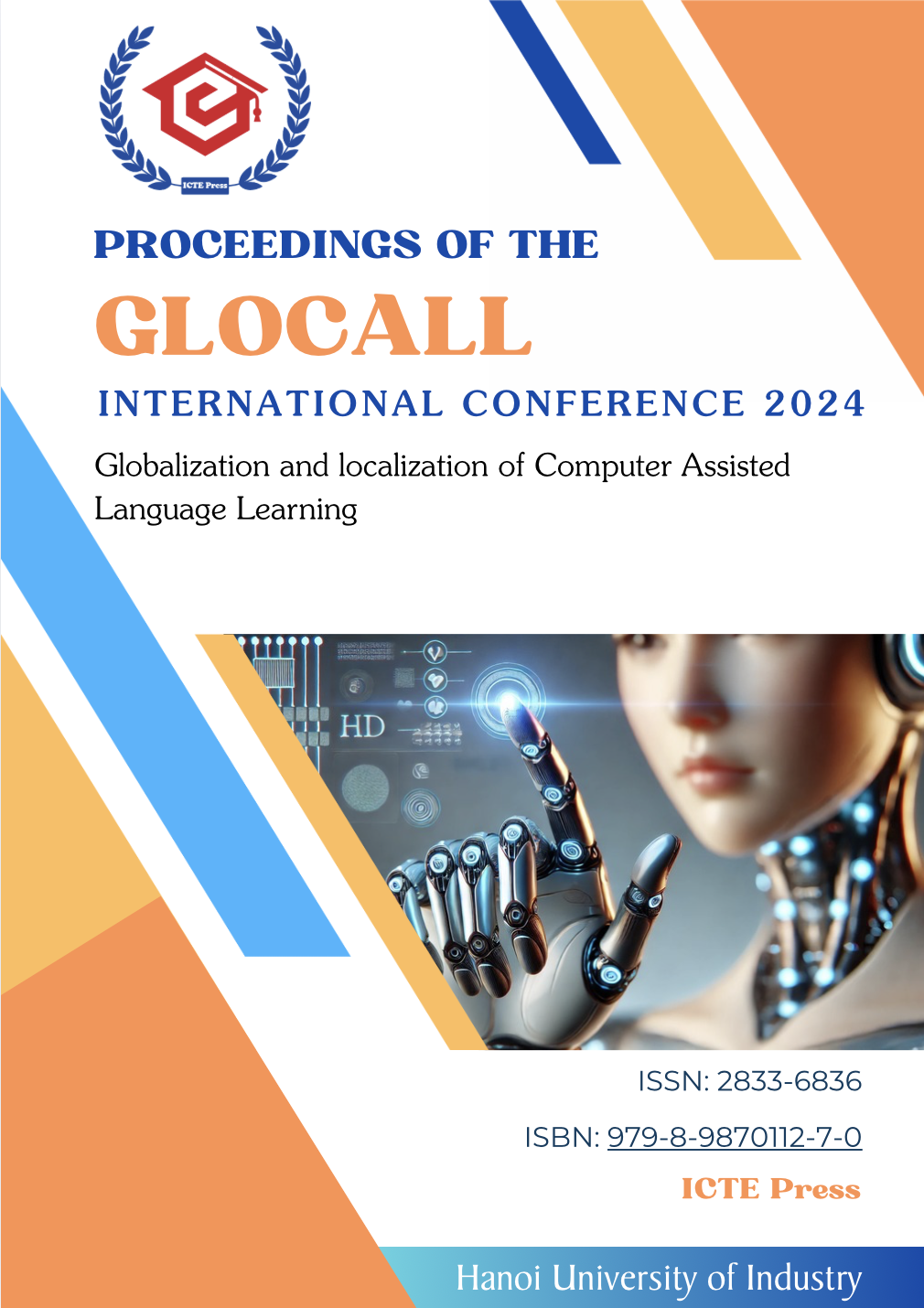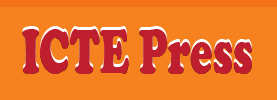Vol. 7 (2025): Proceedings of GloCALL International Conference 2024: Globalization and localization of Computer Assisted Language Learning

Venue: Hanoi University of Industry, Ha Noi, Vietnam
ISSN: 2833-6836
ISBN: 979-8-9870112-7-0
DOI: https://doi.org/10.54855/paic.257
Guest Editor: Associate professor Dr. Nguyen Thuy Nga, Dean of the School of Languages and Tourism – Hanoi University of Industry, Vietnam
The Proceedings of GloCALL International Conference 2024: Globalization and Localization of Computer-Assisted Language Learning, at Hanoi University of Industry, Ha Noi, Vietnam, is a complete collection of peer-reviewed papers that look at the latest research, practices, and innovations in the field of CALL (Computer-Assisted Language Learning) in both global and local settings. The GloCALL Conference, which will be held in 2024 by top scholars and institutions, is still a great place for teachers, researchers, and technologists to share their thoughts on how globalization and localization affect the design, integration, and effects of technology in language teaching and learning.
This book has a wide range of studies from all around the world, including ones from schools with a lot of technology and ones with very few resources. The book is arranged by themes that cover important subjects such AI-driven language learning tools, mobile-assisted language learning (MALL), gamification and VR/AR applications, teacher professional development in CALL, learner autonomy, and fairness in digital language education. There is a lot of focus on the conflict and cooperation between global CALL solutions and the need for adjustments that are appropriate for different cultures and languages.
The authors of this volume look at the pros and cons of using global technologies in localized curricula, look at how students and teachers feel about new learning platforms, and provide empirical evidence on how well a wide range of CALL applications work as teaching tools. The proceedings give useful information about how CALL is changing to fit the needs of classrooms that are becoming more multilingual and multicultural. They include studies on elementary, secondary, university, and adult education.
The papers also show what education looks like now that the pandemic is over. Many of the contributions talk about digital literacy, hybrid and online learning models, and the changes in teaching that are needed to keep students interested and successful in virtual settings.
This book is a great resource for teachers, researchers, curriculum designers, and policymakers. It not only shows how innovative things are happening around the world, but it also stresses how important it is to be sensitive to the needs of the situation when using CALL. It is a timely addition to the increasing body of work that connects theory and practice in language instruction that uses technology.








